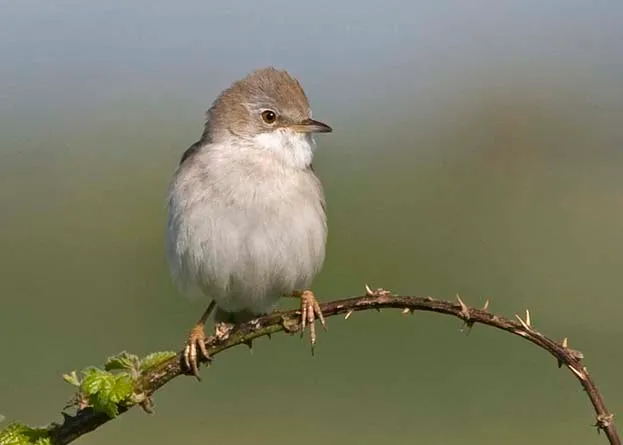Whitethroat © Amy Lewis / BTO
1. Summer guests
Whitethroats are migratory warblers that spend the winter in the Sahel, just south of the Sahara Desert in Africa. They arrive in the UK from mid to late April and usually leave again from August, though they can be seen well into September. They will visit gardens, especially during the spring and autumn migration.
2. Migration challenges
Finding enough food to make the journey north from Africa can prove tough for whitethroats. Berries from Salvadora bushes are particularly important for them as they are easy to digest and rich in sugar, allowing them to deposit the fat needed for a long migration. In some years, a large proportion of our breeding whitethroats fail to return, with the most dramatic ‘crash’ in the late 1960s seeing the breeding population reduced by 75 per cent following a drought in the Sahel.
3. Oldest on record
While the average of a whitethroat is two years, the oldest bird that we know of seven-years-old. Ringed in August 2002, it was caught again in August 2009 at the same site. This is incredible for a small long-distance migrant which travels a 11,265km round trip annually, crossing the Sahara twice a year!

While males have bright white throats, those of the female are off-white © Colin Brown / BTO
4. Pick of the bunch
Due to the short time that they spend in the UK, whitethroats quickly get down to the business of breeding, with the first eggs usually laid in May. The male will build several nests for the female to choose from, and she will line the one that she likes best with fine grasses and hair. They both incubate the eggs, but the female does most of the work as she always has the night shift.
5. Nettlecreeper
Whitethroats are mainly found in scrubby habitats preferring low cover, including brambles and nettle patches and the bottom of hedgerows. This has led to the species gaining the local name of ‘nettlecreeper’. They mainly feed on invertebrates such as beetles and caterpillars but will take berries during the autumn before they migrate.
6. How to identify a whitethroat
The male whitethroat is a striking bird with a pale grey head, bright white throat, dull brown back and reddish-brown wings. Females and juveniles are similar with off-white throats and brown heads.
The British Trust of Ornithology (BTO) works in partnership with over 40,000 volunteer birdwatchers to chart the fortunes of UK birds.
Among the surveys that we coordinate is our popular Garden BirdWatch, the largest year-round survey of garden birds in the world.
For more information about Garden BirdWatch or to speak to the Garden Ecology Team please email gbw@bto.org

